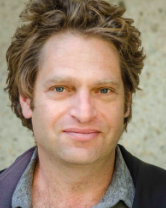
Editor’s Note: The original version of this story indicated that the earth was on track to increase temperature by two degrees Celsius in ten years. In fact, it will do this in twenty five years.
UC San Diego psychology professor Adam Aron stressed the importance of social mobilization as the key to fighting the climate crisis in a Mesa College event in honor of Earth Day on April 20.
Aron, who has a doctorate in cognitive neuroscience from University of Cambridge, began by asking “How concerned are you about the climate crisis?” He instructed students to indicate their level of concern via an arm gesture where parallel to the ground was low concern, and an obtuse angle was high concern.
Professor Aron, whose research is now centered around the social psychology of collective action on the climate crisis according to his profile on the UCSD website, let his gaze wash over the students for a few seconds, taking note of how many showed moderate to low levels of concern. High levels of concern were notably scarce. Without wasting any time, professor Aron jumped straight into his lecture, “The Essential Role of Social Mobilization in Confronting the Climate Crisis.”
The lecture was divided into five segments: what causes heating, the history of deceit & failure, keeping fossil fuels in the ground, why we need social mobilization, and finding your frontlines.
While covering the first segment, Aron explained that global heating is primarily due to our increased carbon emissions which have drastically accelerated the greenhouse effect. The greenhouse effect itself is not the problem, in fact, it is what makes life on earth possible. The problem is the rate at which we are emitting carbon. There are currently about 1 trillion tons of carbon dioxide sitting up in the troposphere, the layer of the atmosphere that is closest to earth and where most weather phenomena take place. This trapped carbon dioxide is what is creating global heating, which is at the heart of the climate crisis.
With the urgency of the climate crisis being of such gravity, why are we so complacent about it?
Aron proceeded to address the history of deceit by leaders and corporations that depend on fossil fuel extraction, and held them responsible for general confusion and lack of understanding. One of the groups responsible for such misinformation are major petroleum companies.
“To shape public opinion knowing that the facts were against it, the fossil fuel industry began to actively attack those facts, creating an alternate universe where CO2 levels and rising temperatures were unrelated to each other and branding any scientist who said otherwise as an alarmist,” said Aron in his book “The Climate Crisis”.
He explained that though it was their research that affirmed rising levels of carbon dioxide in the atmosphere as early as the 1970’s, they proceeded to intentionally misinform the public in favor of their extractive practices. Since then, the fossil fuel industry has shifted gears, employing tactics that are much more insidious, according to Aron. They claim to be working towards “net zero,” a concept that is not the solution it’s being promoted to be.
Net zero is an idea that preaches we can remove carbon dioxide from the atmosphere by way of offsetting it via technologies that remove it from the atmosphere. The problem with net zero is that it exonerates extractive practices, ignoring that we are here because of it. Aron argued that instead of focusing on achieving net zero, we need to focus on reducing carbon emissions by 5% per annum if we are to achieve our goal of evading an increased global heating level of two degrees Celsius.
This point led to the most jolting part of the lecture: if earth’s temperature increases by two degrees Celsius, then it will become a planet that does not resemble the one we know now. The result is nothing but catastrophic. Most alarmingly, we are on track to reach that increment within the next twenty five years.
“We must leave fossil fuels in the ground,” said Aron, a phrase he repeated multiple times throughout the lecture.
Though the prognosis sounds hopeless, Aron emphasized that there is still hope. He argued that though the timeframe for change is compressed, impactful change can still occur. He explained that physical tipping points can be avoided by arriving at a social mobilization tipping point. Simply, this means that if enough people care, they can put pressure on leaders to implement the change needed to decrease carbon emissions.
He finished his lecture with what he called “Find your frontlines.” Essentially, this means that becoming a climate crisis activist doesn’t have to look like changing your major or dedicating the entirety of your life to climate crisis advocacy. Aron believes that social mobilization occurs when everyone becomes aware of the micro ways they can contribute to the solution within the scope of their own life. For instance, he offered that finding your frontline as a student at Mesa College can look like learning about the ways Mesa is contributing to the climate crisis, and urge leadership to explore different approaches to functionality.
Other than understanding the severity of the climate crisis, the most impactful takeaway was Aron’s hopeful view on climate activism. With impending doom looming and such little time, it’s easy to feel hopeless or assume nothing we do will make a difference. However, there were roughly thirty students in the room. That’s thirty families, thirty friend groups, thirty workplaces, and perhaps thirty academic fields that could use conversations, and more importantly– action, in the fight against climate change.
Students at UCSD led by Aron have embodied such activism by applying pressure on leadership to transition from carbon based energy sources to cleaner alternatives. They recently secured a win when chancellor Pradeep Khosla announced April 10. that it is his “hope, dream and desire” that they electrify by 2030. If every student took action, in whatever way their frontline presents itself, twenty five years is enough time to save our home.



